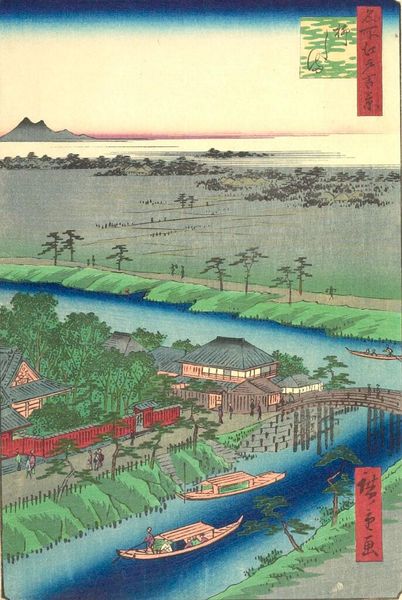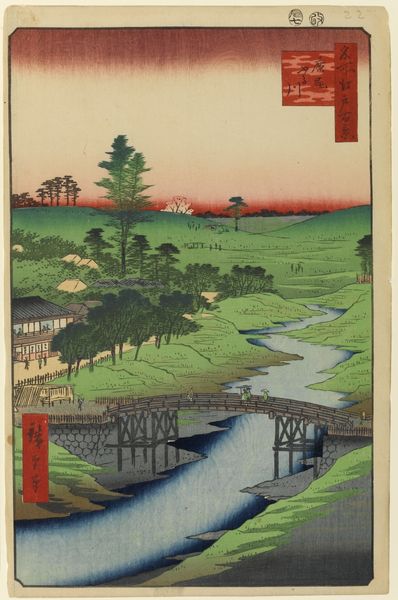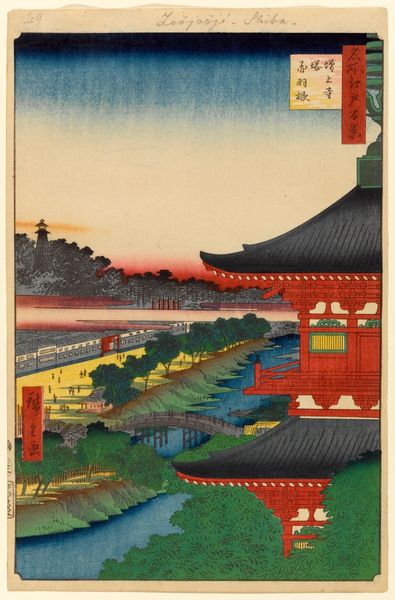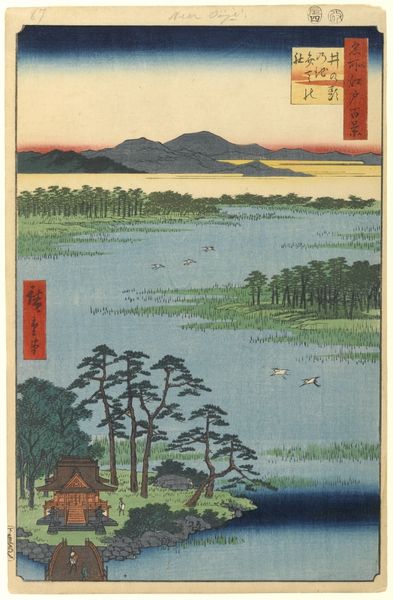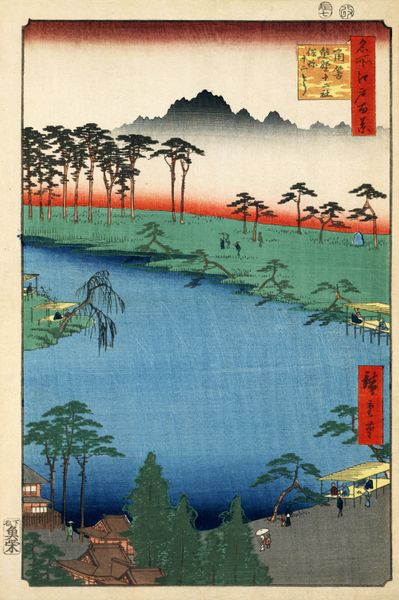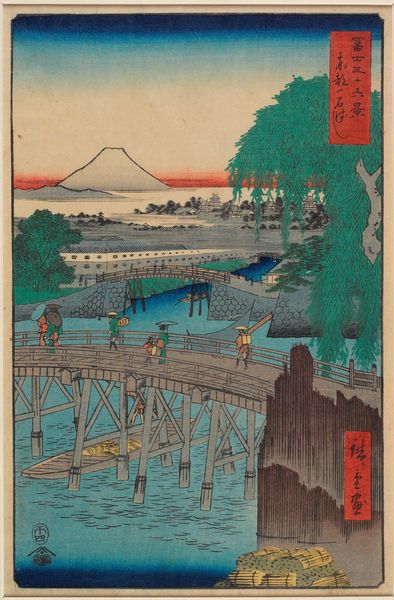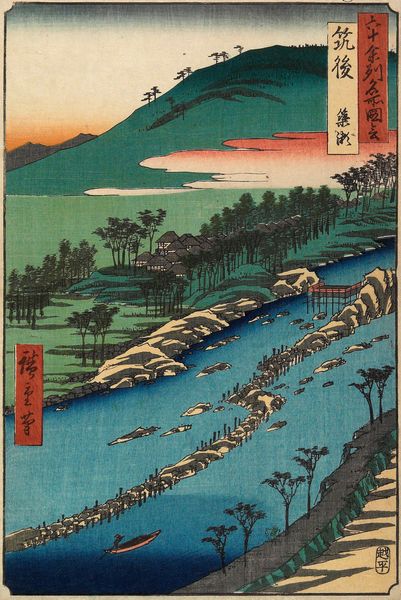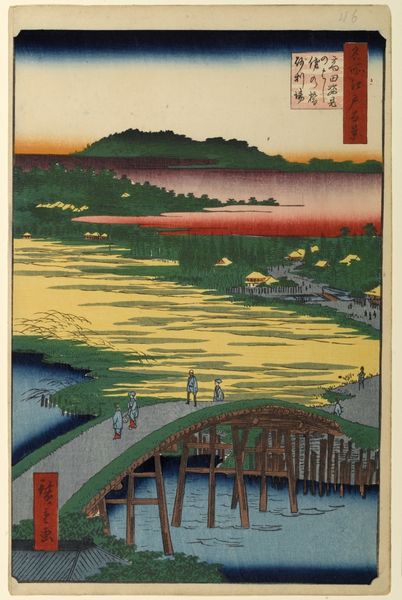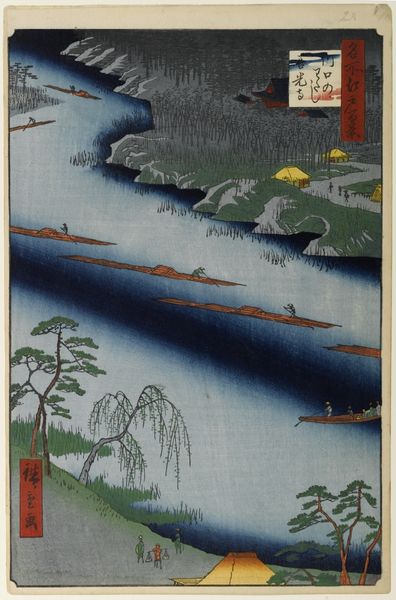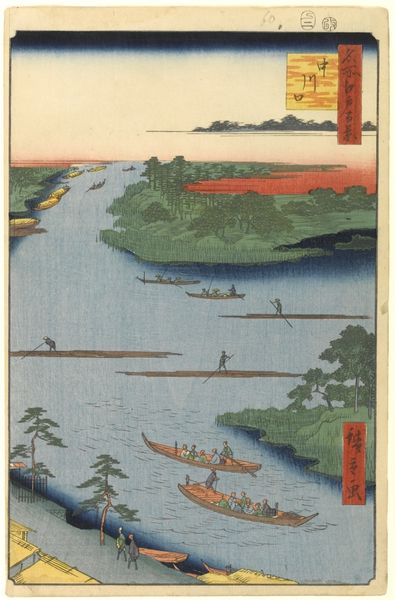
painting, print, woodcut
#
painting
# print
#
asian-art
#
landscape
#
ukiyo-e
#
coloured pencil
#
woodcut
#
watercolor
Copyright: Public domain
Editor: This is Utagawa Hiroshige's "The Yanagishima" from 1857. It's a woodcut print, and I find its depiction of the water particularly striking—there’s a real sense of stillness, despite all the little boats. What do you see in this piece, considering its historical context? Curator: This print, part of the *One Hundred Famous Views of Edo* series, isn't just a pretty picture, it's a cultural touchstone. Waterways were vital to Edo, now Tokyo, not merely for transport but for trade, leisure, and even spiritual cleansing. How does the bridge strike you, in terms of connecting the visible world to perhaps something beyond? Editor: That's a great point. The bridge seems like a connector between everyday life on the water and, maybe, the distant mountains in the background. Almost a connection between the real and the ideal? Curator: Precisely. Notice the willow trees – *yanagi* in Japanese. The weeping willow is a symbol of gentleness, adaptability, but also of sadness or parting. It lends a melancholic, transient feeling to the scene. Think about the weight such symbolism would carry for viewers at the time, connecting to deep cultural understandings. Does it shift your interpretation at all? Editor: It does! Knowing that layers another dimension. It is more than just scenery; it communicates an awareness of feelings like melancholy. Curator: Absolutely. Ukiyo-e prints were immensely popular, and often served as mementos for travelers. These scenes were designed to be easily digestible yet symbolic reminders of specific places and their inherent cultural memory. In this work, it evokes a particular mood of calm contemplation in a busy, expanding city. Editor: I hadn't considered that tourist aspect! Thinking about the cultural symbols definitely deepens my understanding of the piece and its impact on people. Curator: Indeed. Appreciating art like this means unraveling the layers of meaning, considering the emotional, cultural, and historical resonances woven into each image.
Comments
No comments
Be the first to comment and join the conversation on the ultimate creative platform.
